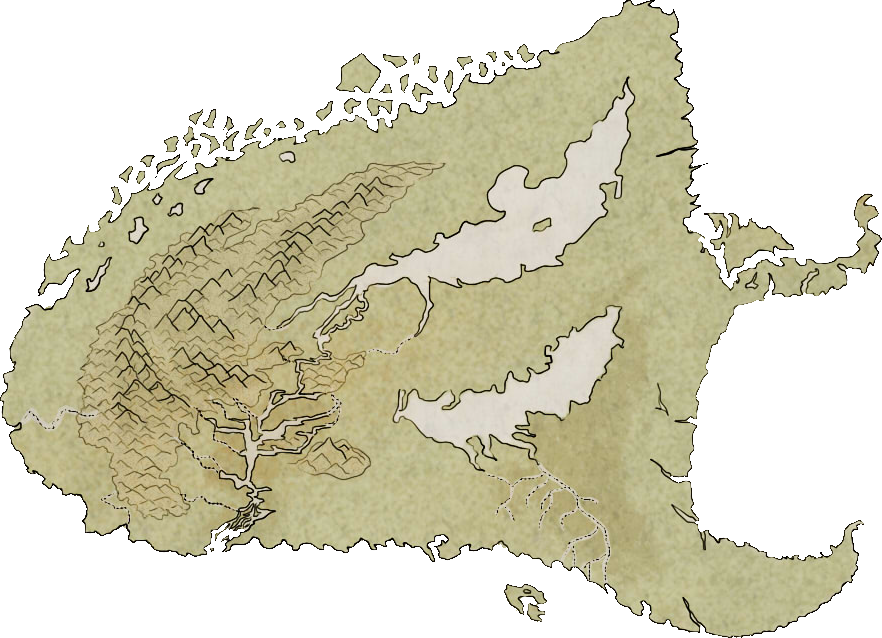Sidrar's Wader
A recent series of expeditions to the Delta of Many Birds was funded to document the flora, fauna and geography of what is one of the richest ecosystems in the Haan Archipelago.
One of the most recently documented species is the Sidrar's Wader (named after the sailor that reported it to a naturalist during an academic expedition), a tall simple bird of which the matter of its actual discovery and documentation date is debated.
In males, this ornamental tail is almost as long as the body. In females, the structure is still present but is much shorter. The bird's body is characterised by its long legs adapted for wading through the reedbeds and its long S-shaped neck to shoot its sharp beak into the water to fish. From the base of the bottom of the beak, the beak's thick skin continues downwards on a thin triangle through part of the neck. When the males sing during the reproductive season, this nude section vibrates for a visual display to the females.
During mating season, males will make a nest close or above the reedbeds of the delta, and attract females with calls and displays of their tail fans. Females will lay between 3 and 5 eggs, and the couple will take turns incubating and raising the chicks until they are about 8 months old. The waders are fishing birds that use their sharp beaks and long necks as harpoons to catch the fish they attract by creating shade on the water's surface with their wings. Other potential prey includes small reptiles and mammals.
While there are no other recorded formal descriptions of the bird, Thaurian farmers around the delta claim that the bird is a rare, but not unheard of sight.
Anatomy
The Sidrar's Wader is a flying bird that reaches around 110cm in height and has a wingspan of about 130cm. It has a brown and dull green plumage contrasted by an orange-red crest that ends in long, fine feathers on top of the shoulder blades. At the base of the tail, it shoots upwards a fan of long ornamental feathers comprised of a thick quill with small light blue fluff at the base, and a black shaft with sparse orange barbs, ending on a light blue semi-circle adorned with green and orange highlights.In males, this ornamental tail is almost as long as the body. In females, the structure is still present but is much shorter. The bird's body is characterised by its long legs adapted for wading through the reedbeds and its long S-shaped neck to shoot its sharp beak into the water to fish. From the base of the bottom of the beak, the beak's thick skin continues downwards on a thin triangle through part of the neck. When the males sing during the reproductive season, this nude section vibrates for a visual display to the females.
Biology and life cycle
The Sidrar's wader has a lifespan of around 5 years and reaches its sexual maturity at 1 year.During mating season, males will make a nest close or above the reedbeds of the delta, and attract females with calls and displays of their tail fans. Females will lay between 3 and 5 eggs, and the couple will take turns incubating and raising the chicks until they are about 8 months old. The waders are fishing birds that use their sharp beaks and long necks as harpoons to catch the fish they attract by creating shade on the water's surface with their wings. Other potential prey includes small reptiles and mammals.
Controversy
"Do you think we missed a meter-tall bird living right next to the city all this time?"
Discovering and Documenting
Thaurian people claim that the Sidrar's Wader was not discovered recently and that it shouldn't bear the name of a foreigner that happened to cross paths with one.While there are no other recorded formal descriptions of the bird, Thaurian farmers around the delta claim that the bird is a rare, but not unheard of sight.
An illustrated history
Over the months following the public announcement about the discovery of the Sidrar's Wader, the Thaurian started the search for earlier records of the bird. The Knowledgeholders were put to the task and produced a series of illustrations and written records that show birds of similar general shape or ornaments, but the correlation remains unclear.
Lifespan
5 years
Average Height
80cm-110cm
Geographic Distribution
Discovered by







I love the local reaction lol! Another great species article with excellent tooltips, and I can't wait to see the articles that it interconnects with!
You are doing a great job! Keep creating; I believe in you!
Luridity: Where love is love and life is lived. Contains NSFW content.
Now with serialized fiction on Ream!!
Thank youuuu Dani! It was fun and hard to figure out how to write about the controversy from the framing point of the article - You need to mention the controversy, but also... the guy who documented it is your close friend and coworker. I hope I managed a good job of it!